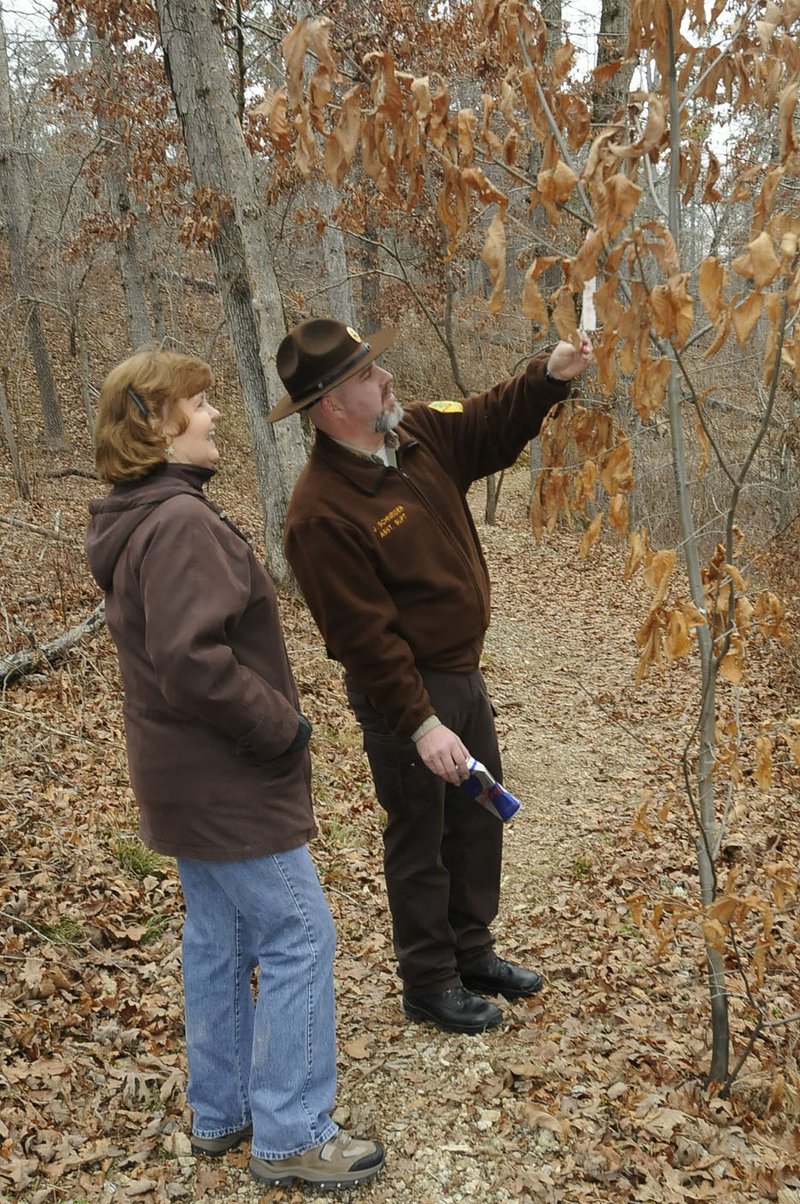BENTONVILLE -- Many people may never have heard of the Ozark chinquapin tree, but there's an effort underway to save it.
The trees once flourished in the South and Southeast, but a blight tracing back to the 1900s killed 3.7 billion American chestnut and Ozark chinquapin trees, said Steve Chyrchel with Hobbs State Park-Conservation Area.
Where are they?
Anyone who knows the whereabouts of a healthy, single-trunked Ozark chinquapin should contact Steve Chyrchel at (479) 789-5006 or Stephen Bost at stevebostocf@gmail.… with the GPS location.
The blight hit in Arkansas in 1957, he said.
"A lot of people have never heard of the tree," he said. "They are not listed as endangered, but they surely are in trouble."
The chinquapin is now basically shrub growth that doesn't produce seeds, he said. Chyrchel said, before the blight, the trees were 3 to 5 feet in diameter and up to 65 feet tall.
"We had a really good tree in Hobbs," Chyrchel said. "We got a lot of use out of it before it died. I don't know of any fruiting tree here."
Chyrchel said the chinquapin has been found in different locations in Arkansas and Missouri, and efforts are underway to find the best seed resistant to blight.
"These trees are so rare," said Stephen Bost, president and founder of the Ozark Chinquapin Foundation. "They are scattered in different states."
Hobbs State Park is working closely with the foundation to save the tree, Chyrchel said.
Hobbs was the first to be successful in cross pollinating an Ozark chinquapin tree at the park with pollen from trees from Mississippi, Missouri, Texas and Arkansas, he said. It established a test plot at the park and the first plantings were in April 2014, Chyrchel said.
He believes it's important to the forest and animals to save the chinquapin.
Acorns are a food source for a number of animals, he said. "Acorns are at the mercy of a late frost," he said. "Squirrels and other animals depend on acorns for food."
The chinquapin doesn't bloom until early May and produces a burl that's a reliable food source.
"They taste like Macadamia nuts, but many people don't know that because chinquapin trees are really hard to find."
Bost called the trees "a keystone source."
He said, "It outproduces other trees at an incredible rate."
Bost said tea made from the leaves of chinquapins was used as a cure for whooping cough.
Forty-six chinquapins have been found in different states over the past 14 years, he said. They are using seeds from those trees to cross pollinate and come up with seeds that are resistant to the blight, he said.
Some people confuse the chinquapin with the Chinese chestnut tree. The confusion can be resolved by checking the burls on the ground under the trees. There's one seed per burl in the chinquapin, Chyrchel said.
"I believe the trees can be saved," he said. "We just need people to get involved."
NW News on 07/22/2019

